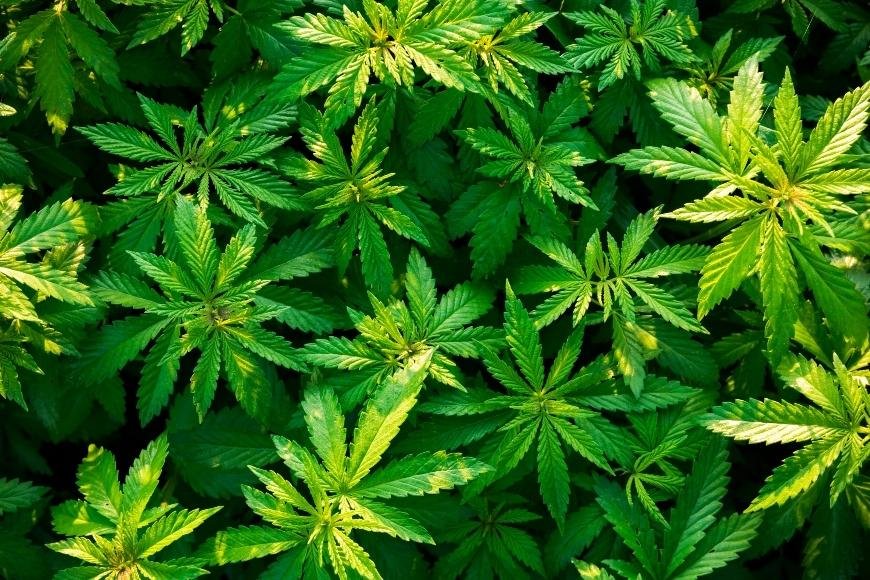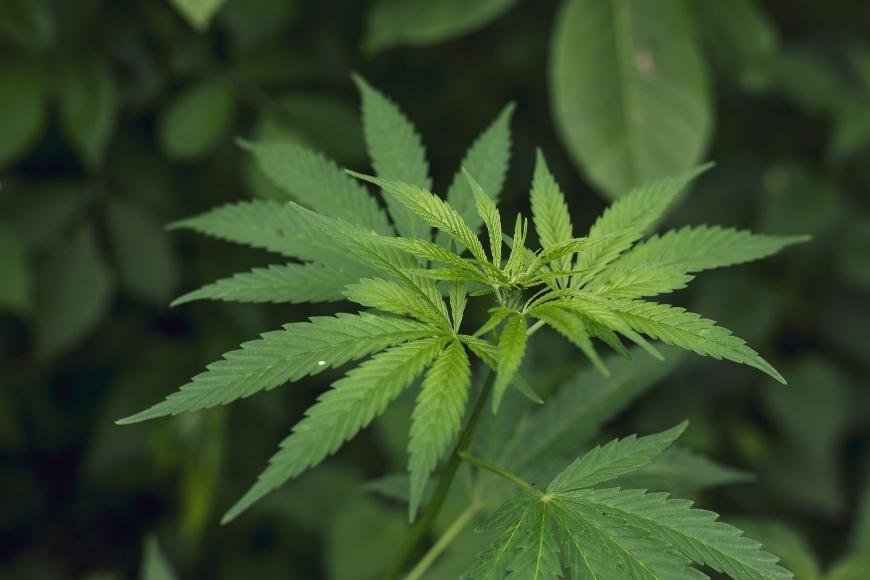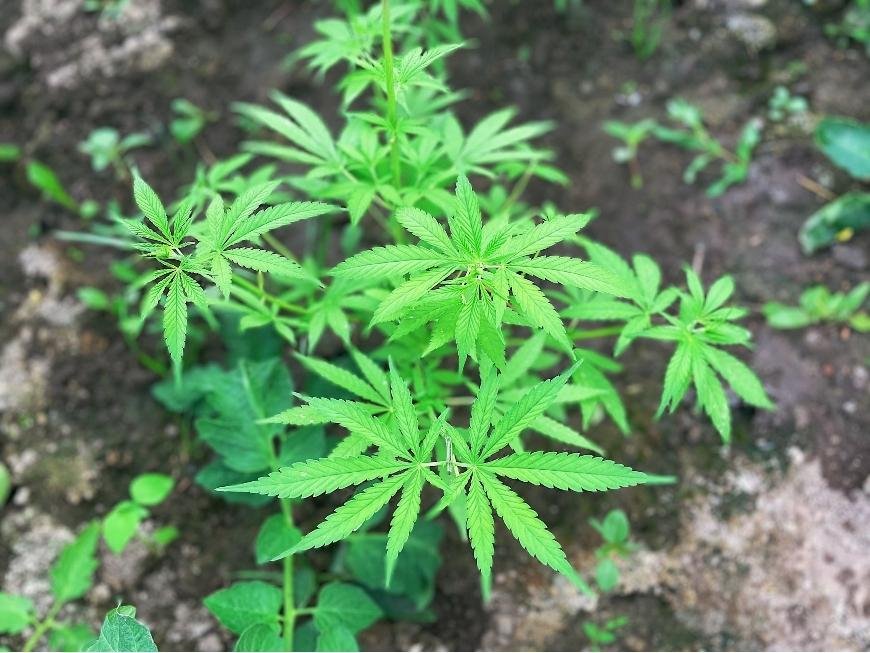The Vegetative Phase of Cannabis Plants
Learn about the vegetative phase of cannabis plants with tips on optimizing conditions, pruning techniques, and boosting plant health for success.

The vegetative phase of cannabis plants is an essential step in the life cycle, influencing overall health and yield. In this blog post, we will delve into the intricacies of the cannabis vegetative stage to help you optimize your growing process for maximum results.
We'll explore how to create an ideal environment that fosters healthy growth during this critical period, as well as discuss various pruning and training techniques that can significantly improve yields. Additionally, we'll address common issues faced by growers during the vegetative stage and provide expert advice on overcoming these challenges.
By understanding and mastering the essential aspects of The Vegetative Phase of Cannabis Plants, you can ensure your plants thrive throughout their entire life cycle - ultimately leading to a bountiful harvest time.
Table of Contents:
- Understanding the Vegetative Phase of Cannabis Plants
- Optimizing Environmental Conditions for Healthy Growth
- Pruning and Training Techniques for Improved Yields
- Common Issues During the Vegetative Period
- Maximizing Plant Health During the Vegetative Phase
- FAQs in Relation to The Vegetative Phase of Cannabis Plants
- Conclusion
Understanding the Vegetative Phase of Cannabis Plants
During the vegetative stage, cannabis plants start to form their roots and leaves, while also storing energy for when they flower. It's during this time that the plant begins to develop its root system and foliage, as well as build up its energy reserves for flowering later on. During this period, it's essential to provide optimal environmental conditions so your plants can thrive.
Illumination is an essential element in guaranteeing appropriate growth conditions during the vegetative period. Cannabis plants necessitate 18+ hours of illumination each day to remain in the vegetative stage; otherwise, they'll begin flowering ahead of schedule. You'll also want to make sure you're using full-spectrum lighting with plenty of blue light for strong stem and leaf development.
Temperature and humidity are also very important factors when it comes to maintaining healthy cannabis plants during their vegetative cycle. Most cannabis strains prefer a temperature of 70-85°F (21-29°C) to remain healthy during their vegetative cycle, while humidity should be kept at 40-50%. Humidity should be kept relatively low, around 40-50%, since high humidity levels can cause mold or other fungal issues which could harm your crop.
Pruning and training techniques are often used by growers who want bigger yields from their cannabis plants while still keeping them in a manageable size throughout the vegetative period. Pruning involves removing fan leaves and branches that aren't getting enough light exposure, while training includes bending stems or tying down branches so more bud sites get direct access to sunlight or grow lights – thus resulting in larger yields come harvest time.
To avoid these issues, you should maintain a regular routine, checking air circulation around all parts of each plant, monitoring soil moisture content and pH levels, providing sufficient nutrients and water, and controlling temperature and humidity levels. All these steps combined will help maximize overall health throughout your entire grow cycle.
Understanding the vegetative phase of cannabis plants is an important step for any grower to ensure healthy and abundant yields. Optimizing environmental conditions can further improve the growth process, leading to even better results.

Optimizing Environmental Conditions for Healthy Growth
When it comes to cannabis cultivation, environmental conditions are key for healthy vegetative growth. The temperature, humidity and lighting all play a role in the success of your plants. The ideal temperature range for cannabis cultivation is between 68-77 degrees Fahrenheit (20-25 Celsius) during the day, with a slightly lower temperature at night. Excessive warmth can cause your plants to become over-stressed and halt their growth, while insufficient heat may impede them from reaching their maximum potential.
Maintaining an optimal humidity range of 40%-60% throughout the entire life cycle is essential for healthy cannabis growth, as too little or too much can be detrimental. Lighting is also an important factor when cultivating cannabis indoors as this is what drives photosynthesis - without light there would be no energy for growth. Make sure you provide enough light intensity depending on the stage of development - typically 600W HPS lamps are used during veg but LED lights may also work well depending on your setup. Finally, make sure you have adequate air circulation in order to keep temperatures stable and prevent mold from forming due to stagnant air pockets around leaves or buds.
By understanding how these environmental factors affect cannabis growth, growers can create optimal conditions that promote vigorous health and maximize yields come harvest time. For example, providing ample light exposure will help stimulate photosynthesis which produces sugars that feed the plant’s cells; whereas proper ventilation helps reduce stress by preventing hot spots where temperatures exceed optimal levels for extended periods of time. Similarly, keeping humidity within acceptable ranges prevents moisture buildup which could lead to disease outbreaks such as powdery mildew or root rot – both of which can quickly ruin a crop if left unchecked. Lastly, maintaining consistent temperatures throughout each stage of development ensures uniformity among plants so they reach maturity together rather than having some lag behind others due to extreme fluctuations in environmentals over long periods of time.
To ensure bountiful harvests and top-notch yields, cannabis cultivators must be aware of environmental variables such as temperature, moisture levels and illumination. By creating ideal conditions tailored specifically towards vegetative growth stages you will ensure healthier plants overall with higher quality flowers come harvest season.
Optimizing environmental conditions for healthy growth is essential to ensure that your cannabis plants reach their full potential. Pruning and training can maximize yields, so let's explore how to get the best out of your plants.
Pruning and Training Techniques for Improved Yields
Pruning and training techniques are essential for achieving maximum yields from cannabis plants. Pruning involves removing parts of the plant that are not needed, such as leaves or branches, to promote better airflow and light exposure. Training can involve tying down branches or manipulating the shape of a plant to increase yields by optimizing light exposure and nutrient uptake.
Topping is one pruning technique used to encourage more lateral growth in cannabis plants. Topping involves cutting off the top shoot of a plant so it will grow two shoots instead of one, resulting in an increased number of buds during flowering time. This technique works best on young plants before they reach their full height potential. When topping your plants, make sure you have sharp scissors or clippers to prevent any damage from being done to the stem or leaves around it.
For larger plants, Fimming is an effective pruning method that yields multiple tops with fewer nodes than topping would have produced; this amplifies bud sites without substantially reducing the overall size like topping does when done repeatedly over time. To fim correctly, one must snip off roughly half of each new growth tip using sharp scissors while avoiding any yellowing areas near the cut area which could be indicative of disease or pest infestation issues needing attention prior to continuing with the fimming process.
Lollipopping is a pruning technique which involves removing lower foliage that won't receive adequate light, thereby freeing up space at the base level and allowing upper canopy to be exposed directly to more intense lighting sources. This practice can bolster bud development and yield quality, as it focuses energy towards producing higher concentration flowers instead of wasting it trying to sustain vegetative growth too far away from direct sunlight or lighting sources available indoors or outdoors.
Growers looking to maximize their yields without resorting to drastic measures can turn to Low Stress Training (LST) as an alternative; this technique involves carefully bending the main stems of a plant and tying them into place until the roots take hold, thus supporting the weight load. This helps optimize photosynthesis capabilities since all sides now receive an even amount of direct sunlight (or artificial lighting in indoor setups). Additionally, LST can be used to manipulate height at certain points and give it a desired shape or structure for the desired end result when harvest time rolls around.
Pruning and training techniques are essential for improved yields in the vegetative phase of cannabis plants, but common issues can arise during this period as well. To guarantee thriving development in the vegetative stage, being aware of any potential issues and how to manage them is crucial.
Common Issues During the Vegetative Period
The vegetative period of cannabis plants is an important stage in their growth. During this stage, the roots and foliage of the cannabis plant will start to emerge while buds begin to form. While it’s a crucial step for successful yields, it can also be a difficult one. Many issues can arise during the vegetative period that could potentially stunt or even kill your crop if not addressed properly.
Without the proper nutrients, plants may struggle to reach their full potential and become vulnerable to pests or disease. Without proper nutrition, your plants won’t be able to reach their full potential and may become weak and prone to other problems such as pests or disease. To prevent nutrient deficiencies from occurring, make sure you are using quality soil with adequate nutrients and supplementing with fertilizers when needed. Additionally, test your soil regularly so you can spot any imbalances before they become too severe.
Pest Problems:
Pests are another major issue that growers face during the vegetative phase of cannabis plants. These pesky critters can cause significant damage to crops if left unchecked so it’s important to take steps towards prevention early on in order to avoid costly losses later down the line. Some preventive measures include monitoring for signs of infestation (such as holes in leaves), maintaining good hygiene around growing areas by removing debris or weeds where possible, introducing beneficial insects like ladybugs into your garden, and spraying organic insecticides when necessary.
Light Stress:
Light stress is another problem that growers often encounter during the vegetative phase of cannabis plants due to incorrect lighting setups or improper light management techniques being used throughout this stage of growth cycle . To prevent light stress from occurring ensure you have adequate lighting coverage throughout all parts of your grow space while keeping an eye out for signs such as yellowing foliage which could indicate overexposure at certain points within each day/night cycle . You should also consider adding reflective materials like Mylar sheets inside grow spaces since these help increase intensity without increasing wattage usage significantly , allowing more efficient use of available energy sources .
Common issues during the vegetative period can be easily avoided with proper planning and care. By maximizing plant health during the vegetative phase, growers can ensure that their plants are healthy and thriving throughout this important growth stage.
Maximizing Plant Health During the Vegetative Phase
Watering is a critical factor in maintaining healthy cannabis plants during the vegetative phase. Plants should be watered deeply, but not too often. Overwatering can lead to root rot and nutrient deficiencies due to oxygen deprivation. The best way to tell if your plant needs water is by checking the top inch of soil with your finger; if it’s dry, it’s time for a drink. Water thoroughly until you see some drainage from the bottom of the pot or tray, then let the soil dry out before watering again.
To ensure the health of cannabis plants during their vegetative stage, fertilization is essential. Applying a fertilizer blend of N, P and K at half potency every two weeks or so is essential for keeping cannabis plants vigorous during their vegetative phase. Too much fertilizer can be detrimental, potentially leading to root burn and inhibited growth or even plant death. Additionally, using organic fertilizers like compost tea will provide beneficial microorganisms that help break down nutrients into forms that are more easily absorbed by plants' roots systems.
For indoor growers, seedlings and young clones require fluorescent lighting while mature plants necessitate higher intensity light sources such as metal halide or high pressure sodium lamps to achieve lush foliage growth and development. Outdoors, natural sunlight suffices depending on the climate conditions of the location.
To promote bushy growth patterns, advanced growers can employ pruning techniques such as topping and FIMming, where new shoots are trimmed back above certain nodes. This stimulates the production of multiple side branches that increase the number of flowering sites for higher yields while reducing plant height to make indoor management easier. Additionally, training methods like low-stress technique (LST), super cropping or scrogging will cause main stems or lateral branches to be bent down towards growing mediums; thus increasing photosynthetic surface area which results in healthier foliage and bigger buds come harvest time.
Finally, pest infestations need special attention because these critters love feasting on tender young leaves, thus weakening the entire structure and eventually leading up to complete crop failure. It is essential to inspect each individual leaf closely weekly for any signs indicating the presence of unwanted visitors such as discoloration, holes or webbing. If found, act quickly before the situation gets worse by utilizing appropriate measures like pesticides sprays approved for safe use around food crops alongside other non-toxic solutions like neem oil based products which have proven effective against a wide range of insect species. Additionally, adding companion planting strategies can provide habitats for beneficial predators who will naturally keep bad guys away without harming the environment.

FAQs in Relation to The Vegetative Phase of Cannabis Plants
What is the vegetative stage of cannabis plant?
During this time, plants focus their energy on photosynthesis to create food for themselves and increase their size. The duration of the vegetative period is contingent on light exposure; as a general rule, 18-24 hours of daily illumination will result in a more compact cycle whereas 12 or fewer hrs per day will extend it. When grown indoors, cannabis can remain in its vegetative state indefinitely if given proper care and attention.
How many weeks should cannabis be in vegetative stage?
The amount of time cannabis should be in the vegetative stage depends on the strain and growing conditions. For optimal results, cannabis plants should typically remain in the vegetative stage for 6-8 weeks before transitioning to flowering. This gives them enough time to establish a strong root system and develop an even canopy structure with multiple nodes, which are important factors for a successful harvest. It is essential to maintain a moderate level of light intensity in order to optimize growth and prevent any undesirable effects.
What happens to a plant in the vegetative stage?
During the vegetative stage, a plant produces leaves, stems and roots while simultaneously building up energy reserves to prepare for flowering through photosynthesis. During this time, the plant builds up energy reserves to prepare for flowering. Photosynthesis occurs during this stage as well; light helps the plant convert carbon dioxide into oxygen and glucose which are then used for cell division and tissue growth. The length of the veg phase can vary contingent on ecological elements, for instance, temp., humidity, light intensity and water supply etc., but usually spans from a couple of weeks to multiple months.
Can cannabis be in vegetative stage too long?
Yes, cannabis can be in the vegetative stage too long. Extended vegetative stages can lead to diminished bud quality and yield, as well as increased susceptibility to pests and diseases due to overcrowding and under-nourishment. Extended periods of time in the vegetative stage can result in overcrowding and stress from lack of nourishment, which may lead to disease or pest infestations. To avoid these issues, growers should regularly monitor their crops and adjust nutrient levels accordingly as needed during the vegetative stage.
Conclusion
Optimizing environmental conditions, utilizing pruning and training techniques, identifying common issues during the vegetative phase of cannabis plants and taking steps to maximize plant health are essential components of successful cultivation. By understanding how to optimize environmental conditions, use pruning and training techniques, identify common issues during this period and take steps to maximize plant health, you can ensure that your plants reach their full potential. With proper care and attention throughout the vegetative stage, growers will be rewarded with a healthy crop at harvest time.





















































































































